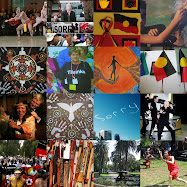
 Bronze sculpture of a World War 1 "digger" (the term applied to Australian and New Zealand soldiers) on the Anzac Bridge. Sculptor Alan Somerville.
Bronze sculpture of a World War 1 "digger" (the term applied to Australian and New Zealand soldiers) on the Anzac Bridge. Sculptor Alan Somerville.Today is Anzac Day in Australia and New Zealand. It commemorates the contribution made in war. The date, 25 April, is the day when troops landed at Gallipoli (Gelibolu) in Turkey in the disastrous Dardanelles campaign of World War One. I prefer to think of it as a day not glorifying war but acknowledging its futility.
The allies landed on the peninsula, the Australians and New Zealanders at a little bay which is now known as Anzac Cove, at dawn on 25 April, 1915. [ANZAC means Australian and New Zealand Army Corps]
The first marking of ANZAC Day commemoration was in 1916. By the 1920s it was a public holiday throughout Australia, as it remains today.
The things I think about on Anzac Day include:
Three years ago I attended Anzac Day commemorations in France, at Villers-Bretonneux, and Bullecourt, two scenes huge Australian involvement on the Western Front. There was far more loss of life in France than Gallipoli, as horrific as the latter was. Here are some of the pictures I took then.
Anyone interested in exploring more about Gallipoli and France/Belgium from the Australian point of view, I thoroughly recommend these books: Gallipoli by Les Carlyon, and The Great War, also by Les Carlyon.
The movie, Gallipoli, starring Mel Gibson and Mark Lee, made in 1981, holds up remarkably well. It is shown nightly at the Anzac Pansiyon in Canakkale in Turkey!
But for documentary film, you just can't go past this Turkish production, also called Gallipoli, from 2005. It is a magnificent film, telling the story of the war from both sides, and depicting the crazyness of it all, as well as the humanity on both sides, mainly throught the personal accounts of combatants on both sides. It uses the photographs, diaries and letters of three Australians, two Britons, three New Zealanders and two Turkish soldiers from the beginning of the campaign to its end. Review here. Do try to see it if you are at all interested in this part of our history. I'm watching it tonight on SBS TV.
More tomorrow, on a more personal note.




Wow. This is an impressive post, Sally. The statue is really nice. I like your narrative as well.
ReplyDeleteI went to the dawn service as i do every year. It just has more meaning and emotion in it.
ReplyDeleteI plan one day to attend the ceremony in Gallipoli :-)
Excellent photos Sally. I watched parts of the Turkish production on SBS tonight too.
ReplyDeleteThis is an excellent post and I agree about the "digger" contribution to the Australian identity.
My paternal grandfather spent 3 years in the trenches and wrote to his mother every week. She kept all of the letters which were later bound into a book called "Letters to Home". He was wounded (shrapnel shell passed in and out of his thigh) and as a child, I used to stick my little fingers in the hole every chance I got when he wore shorts in the summer.
There are so many ANZAC Day posts today, all with stunning images and poassinate text. An excellent post.
ReplyDelete